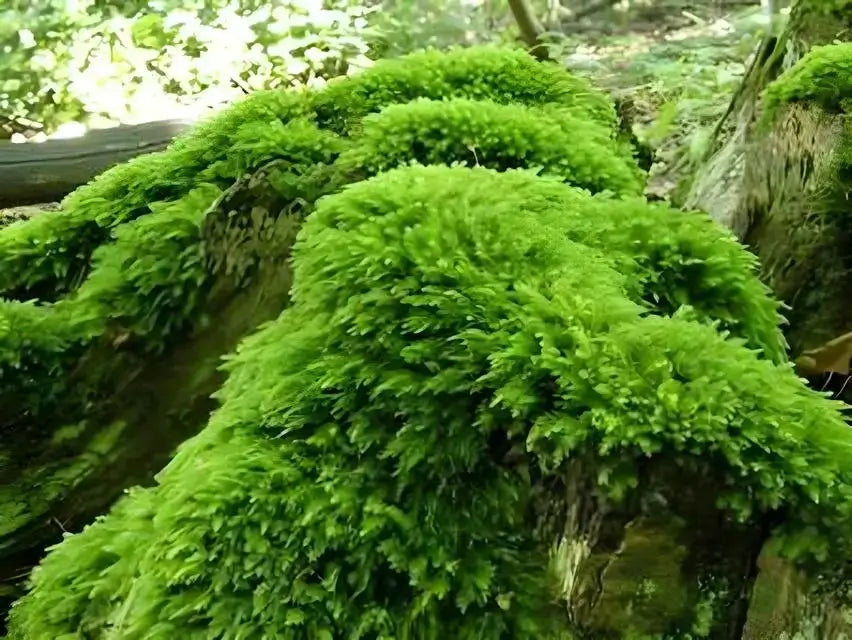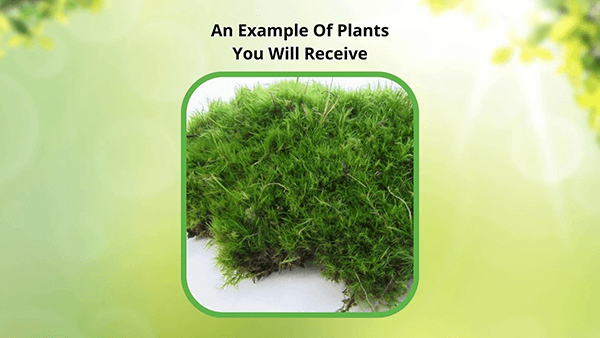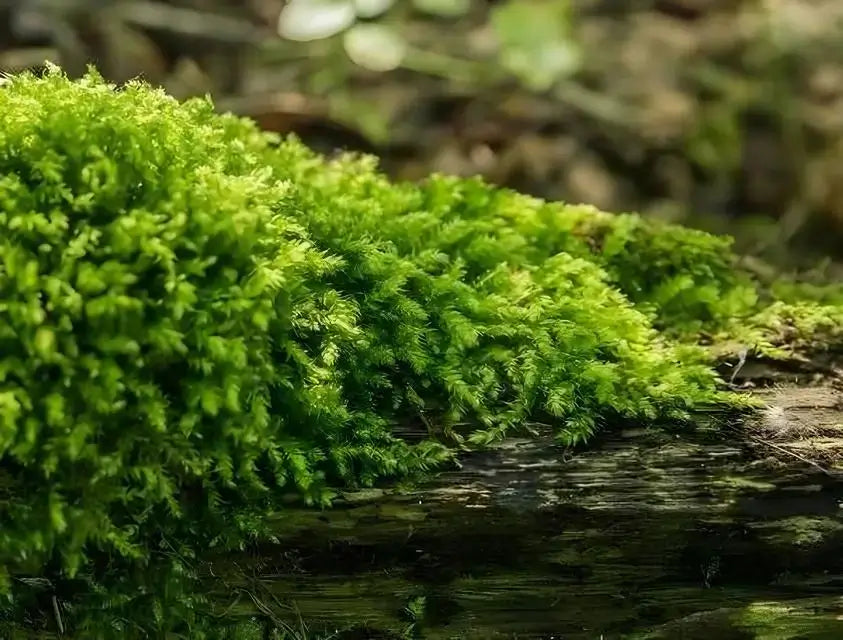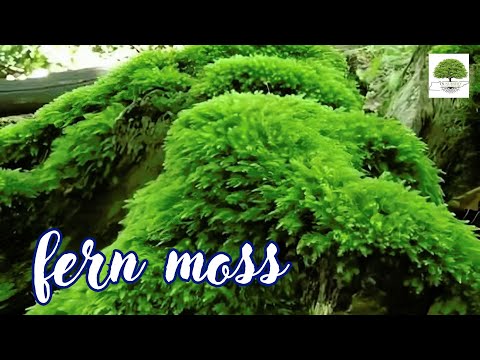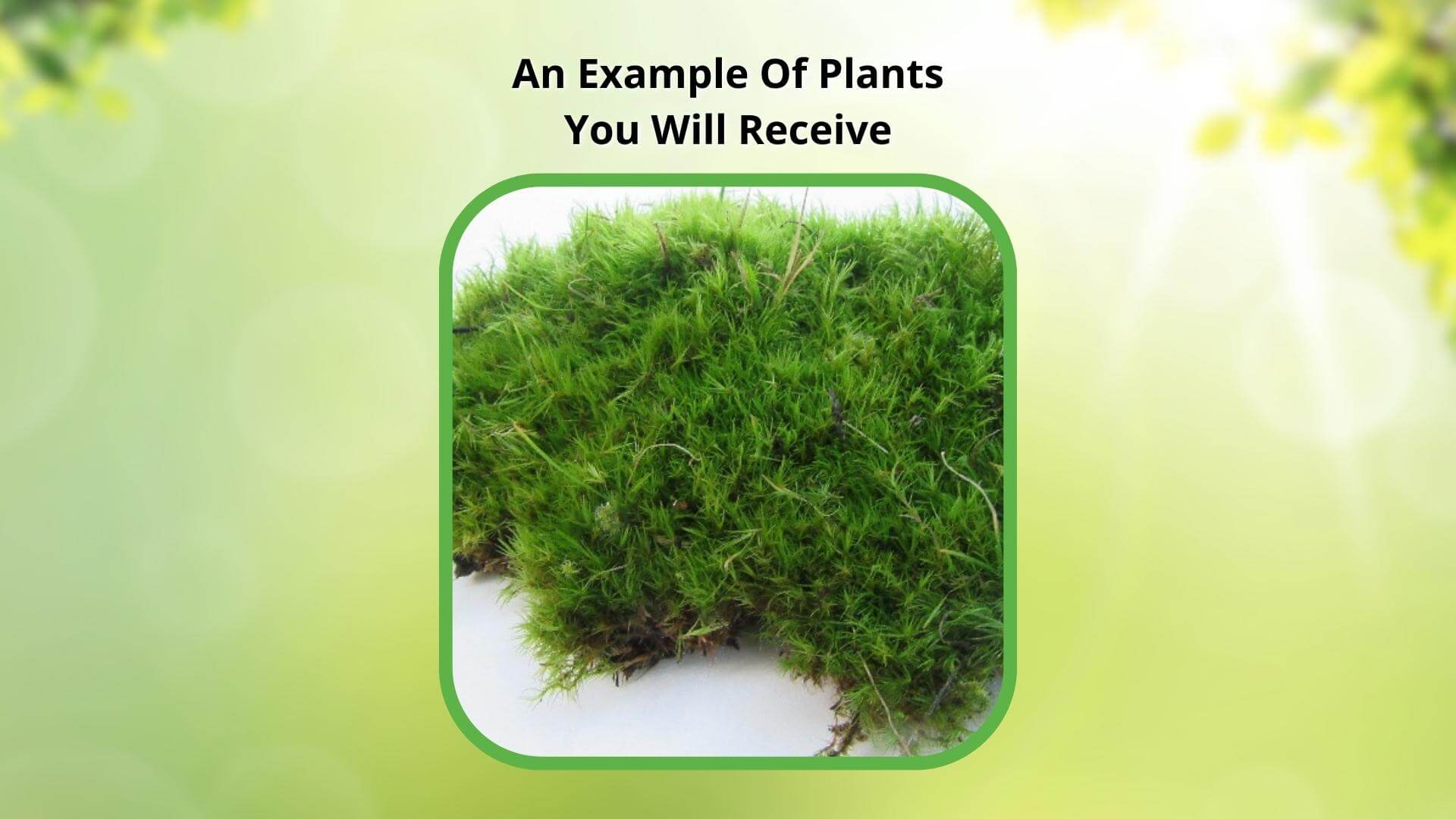Fern Moss for Sale | Thuidium delicatulum Groundcover
Upon touching Fern Moss, you will quickly appreciate its lacey, feathery leaves. Its scientific name is Thuidium delicatulum, with its species name ‘delicatulum’ aptly describing its delicate appeal. While it is not a type of fern, the leaflets pose a dashing resemblance to the plant. It is found growing in the wild all over North America, decorating creek sides and forest floors with its artistic whimsy.
Plant Details of Fern Moss (Thuidium delicatulum)
Family: Thuidiaceae
Light Requirement: Partial Shade – Full Shade
Water Needs: Moderate - High
Height: 1-3 cm., with individual stems horizontally growing up to 4 in. long
Spread: Indefinite
Growth Rate: Moderate - Fast
Wildlife Value: Provides critical shelter for small critters, retains beneficial moisture, benefits soil quality
Like many mosses, this plant fulfills a critical role in ecosystems. It harbors crucial moisture that small invertebrates and amphibians rely on. Its dense mats and long, overlapping leaves work to prevent erosion, stabilizing the soil in shady, moist areas.
The leaflets can be lightly serrated, further enhancing their similarities to true ferns. While it is low-growing and horizontally spreads through rhizoid roots, individual stems can be a few inches long.
Landscape Uses and Maintenance - Fern Moss
This moss is most often grown as a groundcover for difficult terrain. It can be grown on slopes, on top of rocks in rock gardens, or simply grown under trees. Fern Moss is low maintenance, requiring only a reliable amount of moisture to proliferate at its best. The leaves are saturated with beauty, making this moss a very popular choice grown in terrariums for up-close observation.
Noteworthy Characteristics of Fern Moss (Thuidium delicatulum)
Fern Moss is also sometimes known as feather moss since the leaves form the distinct shape of a quill pen. Upon even closer inspection, the leaflets are in the shape of Christmas trees.
Even though this moss continuously spreads evenly in a carpeted habit, the distinct individual leaf shapes give the illusion of fern mounds growing along the landscape, fulfilling several aesthetic roles in one moss.
